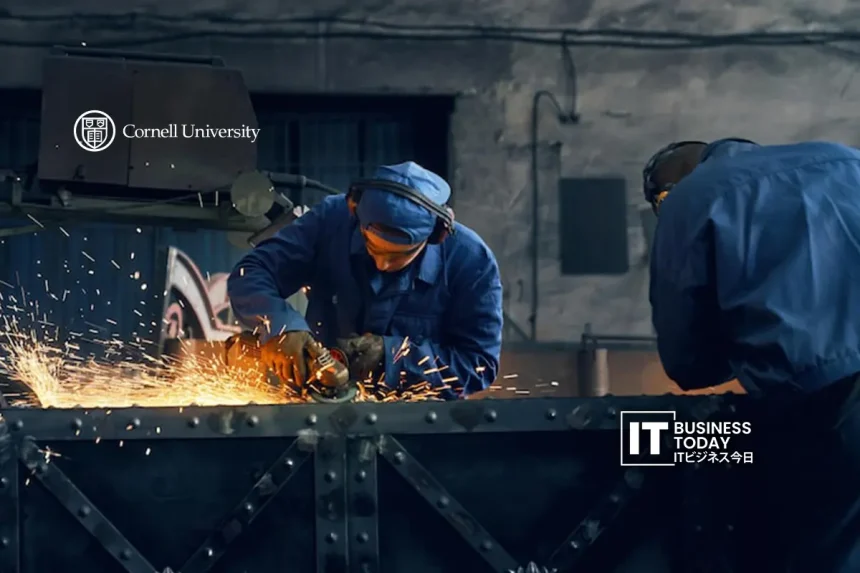最近発表された論文 arXiv, ROS2-TMSは、現実世界の建設機械と仮想モデルを緊密に連携させ、土工作業を自動化するために設計されたサイバーフィジカルシステム(CPS)です。.
この研究は、人口減少や労働力の高齢化によって引き起こされる日本の建設セクターの労働力不足に直接対処し、ロボット主導の次世代インフラストラクチャーの道筋を示すものです。
この記事では、まずROS2-TMSとそのコンポーネントが何をするのかを説明し、次にこの開発が日本の技術・建設エコシステムに与える影響を評価し、最後にこの分野で事業を展開する、またはこの分野に隣接する企業がどのような影響を受けるかを探ります。
こちらもお読みください: フォスター電機、インターハプティクス社と戦略的契約を締結
ROS2-TMS for Constructionの機能
その中核となる研究は、クローラーダンプやバックホーといった建設現場で実際に使用されている重機を、安全かつ最適化された自律的な方法でコーディネートするという共通の課題に取り組んでいます。システム構成は以下の通り:
センサーネットワークと環境モニタリング
複数の分散型センサーが環境条件(地形、障害物、傾斜など)を捕捉し、中央データシステムにフィードします。
デジタル・ツイン/バーチャル・サイト表現
センサーからの入力と機械からのテレメトリにより、システムはサイバースペース上にバーチャルな建設現場を構築します。このデジタルツインは意思決定のハブとして機能し、現在の状態を分析し、結果を予測し、経路をシミュレーションし、次のステップを最適化します。
OPERAによる制御とビヘイビアツリーの拡張
仮想的な動作を実際の機械の動作に変換するために、著者らは既存のオープンロボティクスフレームワークであるOPERA(日本の土木研究所が開発)を、特にクローラーダンプマシンのナビゲーション用に拡張しました。
これを、サイトロジック、フォールバック戦略、安全制約を反映したカスタムビヘイビアツリーと組み合わせます。
実験的検証
チームは、クローラーダンプとバックホウを使った実際の実験を行い、ナビゲーション、モーションプランニング、センシング、制御の各サブシステムが現実的な現場条件下で期待通りの動作をすることを検証しました。
その結果、現場センサー、バーチャル・モデリング、モーション・コントロール間のリアルタイム・フィードバック・ループにより、建設機械が半自動的に行動できるCPSプラットフォームのプロトタイプが完成しました。
日本の技術・建設セクターへの影響は?
加速する日本のロボティクス&スマートインフラ推進
日本は以前から、ロボット工学の強みをインフラの刷新と融合させることを目指してきました。このCPSプラットフォームは、そのビジョンに向けた具体的な一歩です。この取り組みが成熟すれば、地元のロボット企業、センサー・メーカー、マッピング&ローカライゼーション新興企業、AI/MLモデル開発者は、実際の建設環境での展開への障壁を低くし、目標とする直接的なユースケースを持つことができます。
CPS/IoT/デジタル・ツイン・エコシステムの分野横断的な後押し
この論文は建設に関するものですが、同様のCPSアーキテクチャは鉱業、農業、都市計画、災害復旧などにも関連します。センサー・フュージョン、リアルタイム・シミュレーション、制御ロジックの進歩は、他の領域にも適応可能です。その結果、日本の幅広いCPSおよびIoT産業は、この基礎研究から勢いを得ることができるでしょう。
人材と研究開発への注力
テクノロジーが研究から産業へと移行するにつれて、エンジニアのニーズは高まるでしょう。このようなエンジニアは、ロボット工学、制御、センサーネットワーク、機械システム、デジタルツイン、ソフトウェア統合のスキルを持つべきです。日本の大学、研究所、産業界は、能力向上のためのプログラムや資金調達を迅速に進めることができるでしょう。.
規制、安全性、標準化の必要性
オープンな環境における自律型重機は、安全性、責任、基準に関する問題を提起します。日本は、作業員の安全プロトコルから環境コンプライアンスに至るまで、自律的な建設作業を許可または管理するための規制を進化させる必要があります。機械ベンダー間のインターフェイス、データ形式、接続性の標準化も重要になるでしょう。
ビジネス&産業効果
建設・インフラ企業
ロボットや自律型機器を使用する企業は、人件費を削減することができます。また、精度が向上し、生産性が向上し、遅延が減少します。時間の経過とともに、メンテナンス、スケジューリング、リソースの割り当て、プロジェクトの見積もりが改善されます。これにより、無駄のない、データ主導の建設ワークフローが実現します。
現場の改修や新しいCPSツールの追加には、資金、チームワーク、変更管理が必要です。現場管理者、機械オペレーター、安全管理者などの利害関係者が協力する必要があります。早期の採用者は競争優位に立ちます。後発組は遅れをとるリスクがあります。
ロボット / 機械サプライヤー
装置メーカー(掘削機メーカー、ダンプトラック、制御システム)は、潜在的な協力者または統合パートナーです。これらの企業は、CPSモジュール、センサ・スイート、接続性、または「ロボット工学対応」ハードウェアを組み込む可能性があります。また、建設環境に適した、信頼性が高く、頑丈なコンポーネントを提供するために競争するでしょう。.
ソフトウェア / AI / システムインテグレーター
この領域は、システムインテグレーターやソフトウェアハウスにとってスイートスポットです。具体的なビジネスチャンスは以下の通り:
- サイトごとのビヘイビアツリーと制御ロジックのカスタマイズ
- サイト固有のセンサー(LiDAR、レーダー、GNSS、カメラ)の統合
- プロジェクト管理、BIM(ビルディング・インフォメーション・モデリング)、ERPシステムとのインターフェース構築
安全性、フォールバック、ロギング、監査証跡の開発
リファレンスCPSスタックとドメイン対応モジュールを構築する企業は、有利な立場になるでしょう。
データ&デジタル・ツイン・サービス
機械の制御だけでなく、生成されたデータとデジタル・サイト・モデルは、分析、パフォーマンス最適化、予知保全、リスク評価、レポート作成サービスに活用できます。データパイプライン、可視化、洞察プラットフォームを提供する企業は、CPSシステムの出力を収益化することができます。
商業化のリスクと障壁
堅牢性とエッジケース実際の建設現場は混沌としており、起伏のある地形、予期せぬ障害物、天候、人間の侵入など、エッジケースを確実に処理するのは困難です。
主な関心事は?コストとROI
相互運用性とベンダーロック:CPSが特定の機械やセンサーでしか動作しない場合、採用が妨げられます。
安全性と法的責任:故障や不具合には高額な費用が発生する可能性があります。
変化への抵抗:人間のオペレーター、労働組合、現場の規範は、信頼が徐々に構築されない限り、自動化に抵抗するかもしれません。
戦略的収穫と今後の展望
自律型建設のためのCPSプラットフォームの開発」で説明されているCPSプラットフォームは、学術的なエクササイズ以上のものです。ロボット工学、デジタル・ツイン、リアルタイム・マシン・オーケストレーションが、建設業のような古い産業にどのような変革をもたらすかを具現化したものです。日本の深刻な労働力不足とインフラ需要は、日本を自然な実験場にしています。.
世界的に見て、日本が堅牢な自律型建設システムを検証できれば、高齢化やインフラ整備の遅れを抱える他の国々のモデルになるかもしれません。この研究は、建設業の未来は自動化された機械だけでなく、インテリジェントな調整、物理的な現場のデジタルミラー、CPSファブリックに組み込まれた現場固有のロジックのアイデンティティであることを示唆しています。







